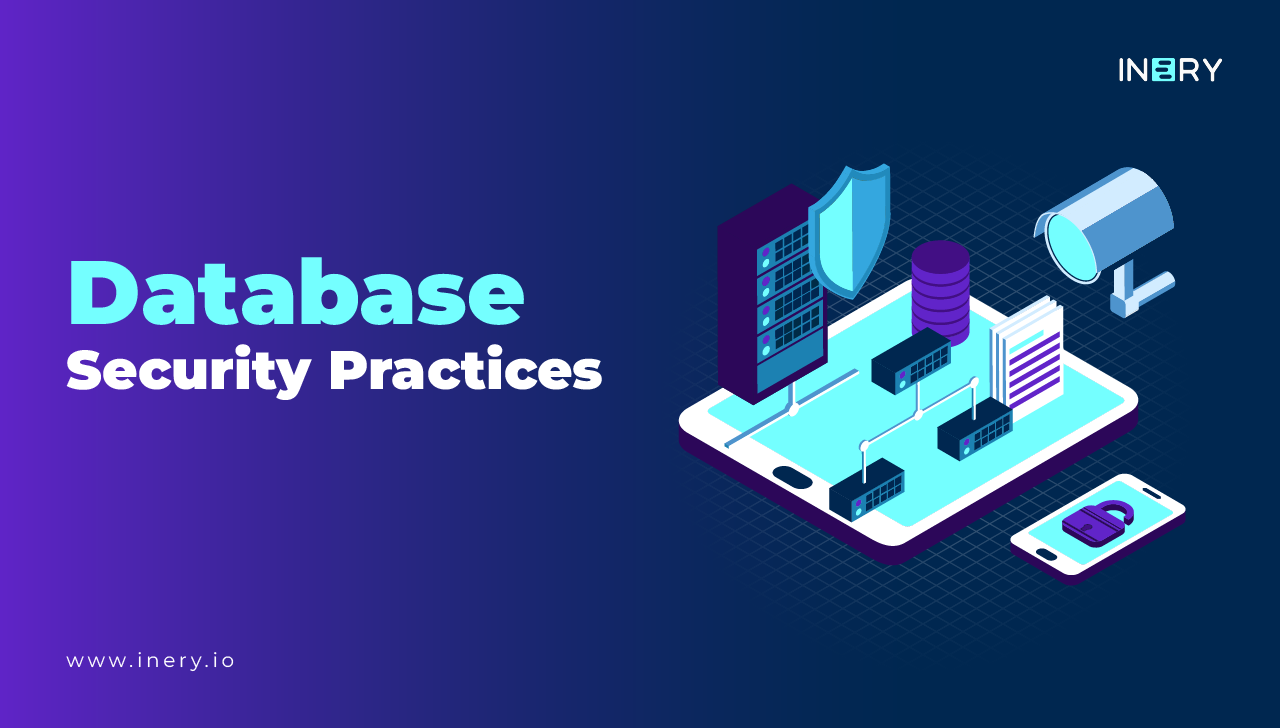Database security refers to the set of measures that protect databases from unauthorized access, theft, modification, or destruction. Databases store and manage large amounts of data, including personal information, financial records, and intellectual property.
This is all considered extremely sensitive data. Compromising this data could lead to life-changing consequences for some. Therefore, database security is crucial for protecting the confidentiality, integrity, and availability of data. To delve deeper into this crucial topic, explore Inery.tech for insights on how to better your database security.
Types of Cyber Threats to Databases
Cyber threats to databases can come from both external and internal sources. External threats include attacks from hackers, malware, and viruses. Internal threats include unintentional errors, malicious insiders, and social engineering attacks. Some of the common cyber threats to databases are:
- Malware: Software that infects a system to steal data or cause damage to the system.
- SQL Injection Attacks: A type of attack where the attacker injects malicious SQL code into a web application's input field to gain unauthorized access to the database.
- Ransomware: This is a type of malware that encrypts the database and demands a ransom to restore access.
- Insider threats: This occurs when an employee with authorized access to the database intentionally or unintentionally causes harm to the database.
Exploring the Weaknesses of Database Management Systems: Common Security Risks
Database management systems (DBMS) are software applications that manage databases. They are vulnerable to several security vulnerabilities that hackers can exploit to gain unauthorized access to the database. Some of the common security vulnerabilities in DBMS are:
- Weak Passwords: Weak passwords are easy to guess, making it easy for hackers to gain unauthorized access to the database.
- Unpatched Software: Unpatched software is vulnerable to known security vulnerabilities that hackers can exploit.
- Misconfigured Databases: Misconfigured databases can allow hackers to gain unauthorized access to the database.
- Lack of Encryption: Lack of encryption makes it easy for hackers to intercept and steal data.
Best Practices for Securing Databases
To protect databases from cyber threats, developers need to implement best practices for securing databases. Some of the best practices for securing databases are:
- Choose a Secure Database Management System: Developers should choose a DBMS that has a track record of security and is regularly updated to address security vulnerabilities. Ideally, a blockchain-based decentralized database management system, which is encrypted and distributed on its own, such as Inery.
- Implement Access Controls: Developers should implement access controls to ensure that only authorized users can access the database.
- Encrypt Data: Developers should encrypt data to protect it from unauthorized access.
- Implement Disaster Recovery Plans: Developers should implement disaster recovery plans to ensure that data can be restored in case of a disaster.
- Regularly Backup Data: Developers should regularly back up data to ensure that data can be restored in case of a cyber attack.
Choosing a Secure Database Management System
Selecting a database management system may seem like an easy thing to do. However, there are several factors that developers should consider when choosing a DBMS.
Some of the factors are:
- Security Features: Developers should choose a DBMS that has security features such as access controls, encryption, and auditing.
- Performance: Developers should choose a DBMS that has good performance and can handle the workload.
- Scalability: Developers should choose a DBMS that can scale to handle large amounts of data.
- Cost: Developers should choose a DBMS that is within their budget.
Data Encryption and Database Security
Data encryption is the process of converting data into a secret code to protect it from unauthorized access. Encryption is essential for protecting sensitive data such as personal information, financial records, and intellectual property. Developers should implement data encryption to protect data from unauthorized access.
Nowadays, we are seeing a trend of developers looking for decentralized options, since Web3.0 solutions are all about privacy and data protection. With this solution, data has a seemingly extra layer of protection due to the immutable nature of blockchain technology.
With blockchain-based DBMS, your data is stored on nodes across the network. If your node or the node you are using goes off, your data will still be ready and stored on another node.
As the importance of data in the modern business landscape continues to grow, many enterprises aren’t just turning to blockchain-based database management systems for both a DBMS solution, but also as a potential solution for data backup and disaster recovery.
Monitoring and Detecting Suspicious Database Activity
Monitoring and detecting suspicious database activity is critical for identifying and responding to cyber threats. Developers should implement monitoring tools that can detect suspicious activity such as:
- Malicious user behavior: Developers should monitor user behavior to detect anomalous behavior such as multiple login attempts, unusual file access, or unauthorized changes.
- Suspicious network traffic: Developers should monitor network traffic to detect suspicious activity such as data exfiltration.
A Bridge Between Web2.0 And Web3.0
Unlike traditional centralized databases that rely on a single point of failure, blockchain-based DBMS offer distributed data storage and enhanced data security features. By leveraging blockchain technology, businesses can ensure that their critical data is replicated across multiple nodes on the network, creating redundancy and reducing the risk of data loss in case of a disaster.
The immutable nature of blockchain data ensures that stored information cannot be tampered with or modified, further enhancing the security of the data.
Inery.tech can offer Web3.0 functionality to businesses that require a secure and transparent infrastructure for data management. Inery is an example of a blockchain-based DBMS that allows businesses to have a Web2.0 “face” while utilizing a Web3.0 background.
By using Inery, businesses and developers can take advantage of blockchain technology without having to navigate the complexities and challenges of managing a database.

Inery•
3 months ago
Data Breaches Are Only Getting Bigger - What Can You Do?
Discover how Inery's blockchain-based, decentralized database management system defends against sophisticated data breaches, securing a safer digital future. ...READ MORE

Share

Inery•
7 months ago
IneryDB 101 - Everything I Need To Know
Whether you're a beginner or tech enthusiast, IneryDB awaits—unlock its full potential and stay informed about upcoming features for a seamless experience! ...READ MORE

Share

Inery•
1 year ago
Inery's Ambassador Program Gets Even Better with Ambassador 2.0
Web3 enthusiasts, today is an exhilarating day! We are happy to unveil the launch of our new and enhanced Ambassador 2.0 program. See more here. ...READ MORE

Share

Inery•
2 months ago
The Challenges of Implementing Blockchain in Traditional Industries
Explore the transformative potential and challenges of implementing Inery's blockchain technology across traditional industries. This analysis covers the revolutionary impacts on finance, healthcare, real estate, and more. ...READ MORE
-1715854000.png)
Share
Most popular today



